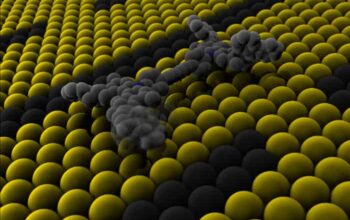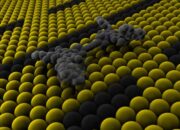In the realm of physics and materials science, the concept of invisibility often evokes images of cloaks and futuristic technology. While traditional notions of invisibility may be grounded in visual spectrums, a more elusive function emerges in the form of acoustic invisibility. This paradigm stretches the limits of our understanding of sound propagation and manipulation. It hints at an increasingly sophisticated dialogue between nature and technology, promising not just silence but the profound implications of cloaking devices that can render objects imperceptible to sound waves.
Acoustic invisibility refers to the engineering of materials or devices that can manipulate sound waves in such a way that they avoid detection. This phenomenon draws inspiration from optical cloaking, yet operates within a different set of physical principles. Instead of light, the focus shifts to sound, exploring how sound waves can be redirected, absorbed, or trapped, creating zones of exclusion or silence.
The fascination with such technology is not limited to its sci-fi allure. It delves into a fundamental inquiry: Why do humans have an intrinsic desire to escape the auditory realm? The modern world, with its cacophony of sounds, from the mundane to the disruptive, drives a collective yearning for moments of silence. Acoustic invisibility promises an escape, proposing a world where one could traverse through life unfettered by auditory disturbances.
The principles underlying acoustic cloaking are deeply rooted in metamaterials. Metamaterials are artificially structured materials designed to exhibit properties not found naturally. These materials can manipulate the physical phenomena of sound waves much like optical metamaterials manipulate light. By altering how sound interacts with objects, one can achieve a form of stealth against acoustic detection, akin to how a visual cloak renders someone invisible.
A variety of techniques are employed to achieve acoustic invisibility. Among these is the use of phased arrays, which employ an arrangement of ultrasonic sensors and transducers to create interference patterns that can redirect sound waves around an object. This technique holds significant promise for applications ranging from military stealth technology to advanced architectural acoustics.
Another method involves the ingenious use of resonators. These devices absorb sound at specific frequencies, effectively silencing the targeted object. The challenge lies in creating materials that can adjust dynamically to varying sound frequencies and intensities, a non-trivial task that requires a profound understanding of both acoustics and materials science.
Research into acoustic invisibility also illuminates deeper conceptual questions about perception and reality. Sound is an essential medium for communication, and our understanding of our environment is substantially mediated through auditory experiences. Rethinking how we interact with sound challenges conventional frameworks of perception. In a world where sound can be rendered nonexistent, what does that imply for social interactions, communication, and even the nature of our experiences?
Furthermore, the potential applications of acoustic invisibility extend well beyond personal convenience or escapism. In medical fields, for instance, sound waves are crucial for imaging and treatment approaches such as ultrasound. If certain structures or organs could be cloaked from sound, it could lead to innovative practices in both diagnostics and therapeutic interventions.
Additionally, consider the implications for environmental acoustics. Urban regions are often plagued by noise pollution, which adversely affects public health and quality of life. Acoustic invisibility technologies could mitigate harmful sounds, creating more serene environments. This proactive approach to sound management has the potential to revolutionize urban planning and architectural design.
However, the advancement of such technology also raises ethical and practical considerations. The ability to shield oneself from sound detection may prompt misuse, particularly in military applications or privacy concerns. Surveillance technologies could be offset by acoustic cloaking, further complicating already intricate socio-political landscapes. As scientific inquiry pushes the boundaries of what is possible, ethical frameworks must evolve concurrently to navigate these uncharted waters.
Moreover, as the quest for acoustic invisibility progresses, it evokes reflections on the intersection of nature and technology. Much like the ways in which technologies emulate biological principles — biomimicry seen in the flight of birds inspiring drone technology — the journey towards acoustic invisibility can reveal hidden attributes of sound itself. Our understanding of flora and fauna’s natural adaptations to sound absorption and evasion might provide insight into developing advanced materials.
As researchers strive to replicate nature’s own mechanisms of camouflage, the dialogue between science and art emerges. The practice of creating a tangible “cloak of silence” can be seen as an artistic endeavor as much as a scientific one. Just as a sculptor shapes material to evoke emotion, engineers and scientists shape sound to craft an auditory experience that is both profound and seamless.
In conclusion, the allure of acoustic invisibility transcends mere technological fascination, serving as a profound commentary on our relationship with sound. It invites individuals to engage in a critical discourse around the implications of such capabilities, the ethical responsibilities that accompany them, and the transformative potential in various sectors, from healthcare to urban planning. Beyond its futuristic appeal, the journey into the realm of silence compels us to consider how we interact with our world, both heard and unheard. The exploration of acoustic invisibility is not a fringe notion of a sci-fi narrative; it is a promising frontier, beckoning a new era of sonic experimentation and innovation.









